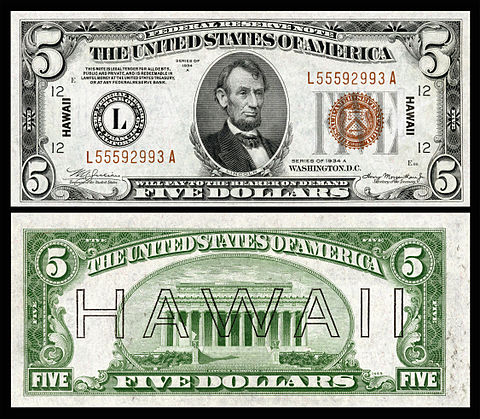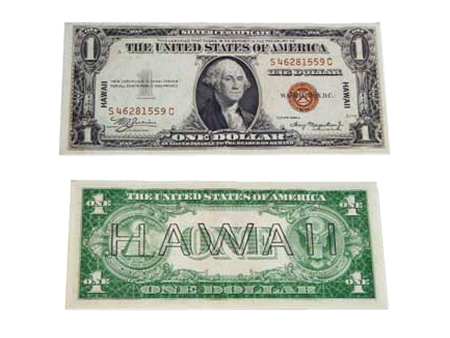Hawaii overprints, why?
Posted by Toby Adkins, Numismatic Scholar for International Currency, L.L.C. on Jan 26th 2018
THE HAWAII OVERPRINT
After the shock of Japan attacking Pearl Harbor, the United States realized if Hawaii were to be invaded, Japan would have access to quite a lot of U.S. currency in banks, as well as in private hands. In January of 1942, there was a recall of all regular issued Federal Reserve notes. The currently circulating currency would be replaced with notes bearing the word HAWAII in bold outline print on the reverse of the notes. By June of the same year, new $1, $5, $10, and $20 Federal Reserve notes were issued for normal use. The purpose was if Japan did invade Hawaii, we could immediately declare the easily recognized "Hawaii Notes" as obsolete and worthless currency.

Collectible Hawaii Notes Today
After Japan's surrender, Hawaii overprints were recalled in 1946. However, many servicemen heading home from Hawaii brought back the notes as collectibles and mementos. In typical human nature, the mundane notes of the day would be prized as collectibles since production had stopped and they were being recalled to be destroyed. Today most collectors opt to have at least one example of a Hawaii overprint as the complete set can be difficult in certain conditions. The most difficult note is the $5 and the easiest denomination to find is the $1 overprint. Regardless of denomination, the Hawaii overprints are a collectible piece of real history and prized by those who are lucky enough to have one!
View collectible Hawaii Notes HERE

